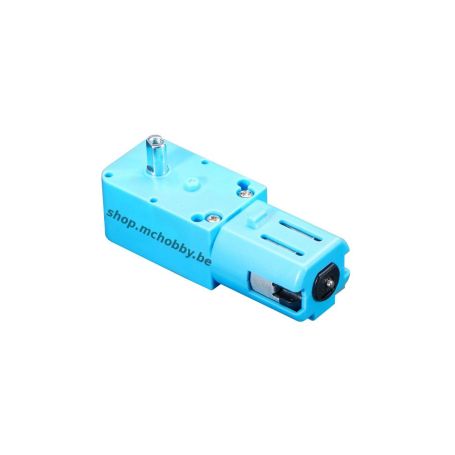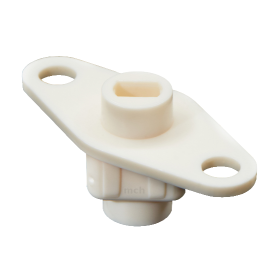TT motor with Bi-metal gearbox - 90:1
Continuous rotation motor - 5V DC
- TT axis
- Metal Gearbox (partial)
- 3 to 6V continuous
- 120 RPM @ 6V
Payments are secured by LyraCollect, a French payment collection company.
It is possible to delivered to your home, to a pick-up point or picked up by appointment at MCHobby
We prepare, pack and ship your orders with great respect and care.
A TT motor with 90:1 gearbox and metal gears
The TT motors (usually Yellow motors) are affordable and easy to work with, a great choice to start mobile projects. This revision of TT motor is geared with a 90:1 ratio but also have metal gears for the two lasts gears.
Indeed, the lasts gears of the gearbox have to resists to staling forces (couple) when the shaft is blocked (meaning that your mobile plateforms tries to go throught the wall... but can do it... the wall is the stronger!). So the last gears may broke some tooth because of the large couple at this point (speed reduction implies couple augmentation)... having metal gears there would improve the gearbox lifetime.
You can use such motors with a voltage between 3 to 6V DC. As expected, the motor will turn quicly at higher voltage.
Here some of the measurement done on this motor:
- Under 3V DC current reach 80mA @ 60 RPM without load AND 0.5 A when the shaft is kept blocked.
- Under 3V DC current reach 90mA @ 90 RPM without load ET 0.8 A when the shaft is kept blocked.
- Under 3V DC current reach 100mA @ 120 RPM without load ET 1.0 A when the shaft is kept blocked.
Please, note that TT Motors are not High Tech Motors, they do not have encoder, neither speed control, neither wheel position indicator. Place a voltage on the motor and it will start to run. Speed may vary a bit from motor to motor (they are not exactly identical from mechanical point of view). If you do need exact same speed for the motors THEN you will have to use a motor controler with feedback.
Technical details
- Size: 70 x 22 x 22mm
- Weight: 34.6gr
Tutorials
You cannot drive such motor directly with the GPIO of you Microcontroler. The current needed by the motor will just kill the IO. You will have to use a motor driver have to handle large current flow (and controlling the motor driver from your microcontroler). You can use a DRV8833 controler or TB6612 controler.
- Drive a DC motor with L293D H-Bridge with Arduino (French).
- Drive a DC motor with L298D H-Bridge with Arduino (French)
- Drive a DC motor with L298 H-Bridge and Raspberry-Pi
- Some other tutoriel to drive motors with Raspberry PI
- Using a DRV8833 to drive DC motor











